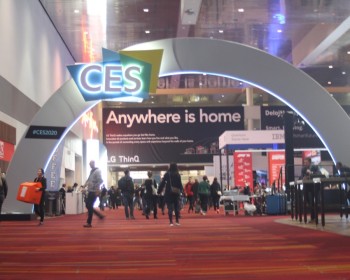It’s never too early to start the year with good news, so here is some to share as I head out to the Consumer Electronics Show (CES): An artificial intelligence (AI) program designed to automate the creation of new drugs was tweaked to generate toxic compounds. It created 40,000 chemical warfare agents in about six hours.
On second thought, maybe that’s not the best AI story to kick off the year. How about this: ChatGPT, an AI model that can create conversational dialogue, recently negotiated a $120 discount from Comcast on behalf of an engineer.
CES launches this week with the usual fanfare. Smart transportation, digital healthcare, and personal security are headlining the event alongside an increasing presence from the ag industry. It will be the first “full” show since 2020. The 2021 expo was virtual, and last year was, well, a shell, with wide open spaces where in previous years exhibitors and attendees jostled for space.
But in just two years, so much has changed.
Telework, telehealth, and distance learning are no longer novelties. Nor are they perceived as “alternatives.” Rather, they are in many instances first choice options, either by themselves or when used in conjunction with more traditional “in person” experiences. Surveys indicate that for many people, price-points are a determinative factor in the decision to engage telehealth. But price-points include more than co-pays or service fees for physician-patient interactions. The American College of Emergency Physicians is scheduled to share developments in remote diagnostics and treatment. These can help address an elusive challenge in health care: Patients defer diagnosis due to high costs and affordability, leading ultimately to increased health care costs that could have been lowered through earlier intervention. More than 500 AI and machine learning medical devices have been approved by the Food and Drug Administration. These include devices designed to identify cancer, hidden heart diseases, and diabetic retinopathy. Deploying these devices strategically in health care shortage provider areas, or enabling remote use of these tools, could facilitate cost-effective intervention at earlier stages of illness.
Other CES highlights include smart transportation, including self-driving cars and electric vehicles. In 2015, I walked by a Tesla on the show floor; it was one of a small automotive segment at CES. In the past several years, however, mainstream automakers including Toyota, Lincoln, Jeep, and Ford are occupying increasing amounts of floor space. And they’re not the only vehicles on-site: John Deere is growing an increasing presence, this year sponsoring the opening keynote address. Again, this is simply indicative of the growing interplay of tech and ag, including broadband-enabled functionalities. And it’s not just the private sector: The FCC is in year three of its Precision Ag Task Force. I’ve been lucky enough to serve on workgroups addressing adoption, jobs, and security, and can attest first-hand that the role of broadband in ag production and supply is receiving coordinated priority attention.
But let’s get back to AI and chemical warfare and ChatGPT.
Without a doubt, every tech endeavor invokes risk. It’s just that the risks seem a little more personal now in an ultra-connected environment. The labs whose AI models proposed 40,000 chemical agents simply reversed the process they had designed to identify compounds that could be used as drugs. And while ChatGPT can generate an original essay that will earn a passing college grade, developers of a public version acknowledge that they need to temper “the tendency of the bot to lie.” For the purposes of negotiating discounts or arguing a way out of parking tickets, the intended outer limits are “aggressive” and “emotional” – but not outright fabrication. The challenge seems to be more about algorithms and less about morality. Indeed, one advantage humans have over AI (for now, at least) is moral reasoning.
And perhaps that brings us to a lens through which we might expect so much of this year’s CES to be viewed: The challenge to apply technology safely, securely, and meaningfully. CES will still boast displays of enormous 4K TVs. But it is also to devices that are aimed at keeping seniors safe at home. Virtual Reality headsets will be found in gaming areas; but they’ll also be highlighted for their use in therapeutic settings.
And there’s some good news to kick off the new year.


